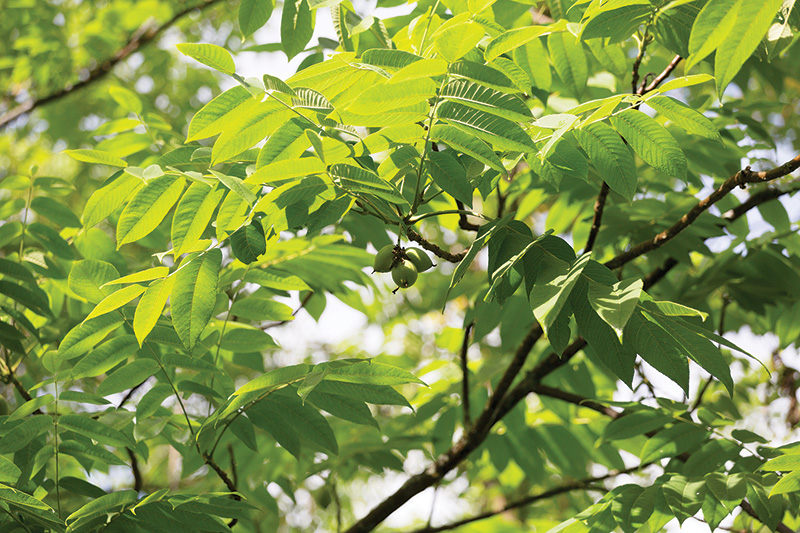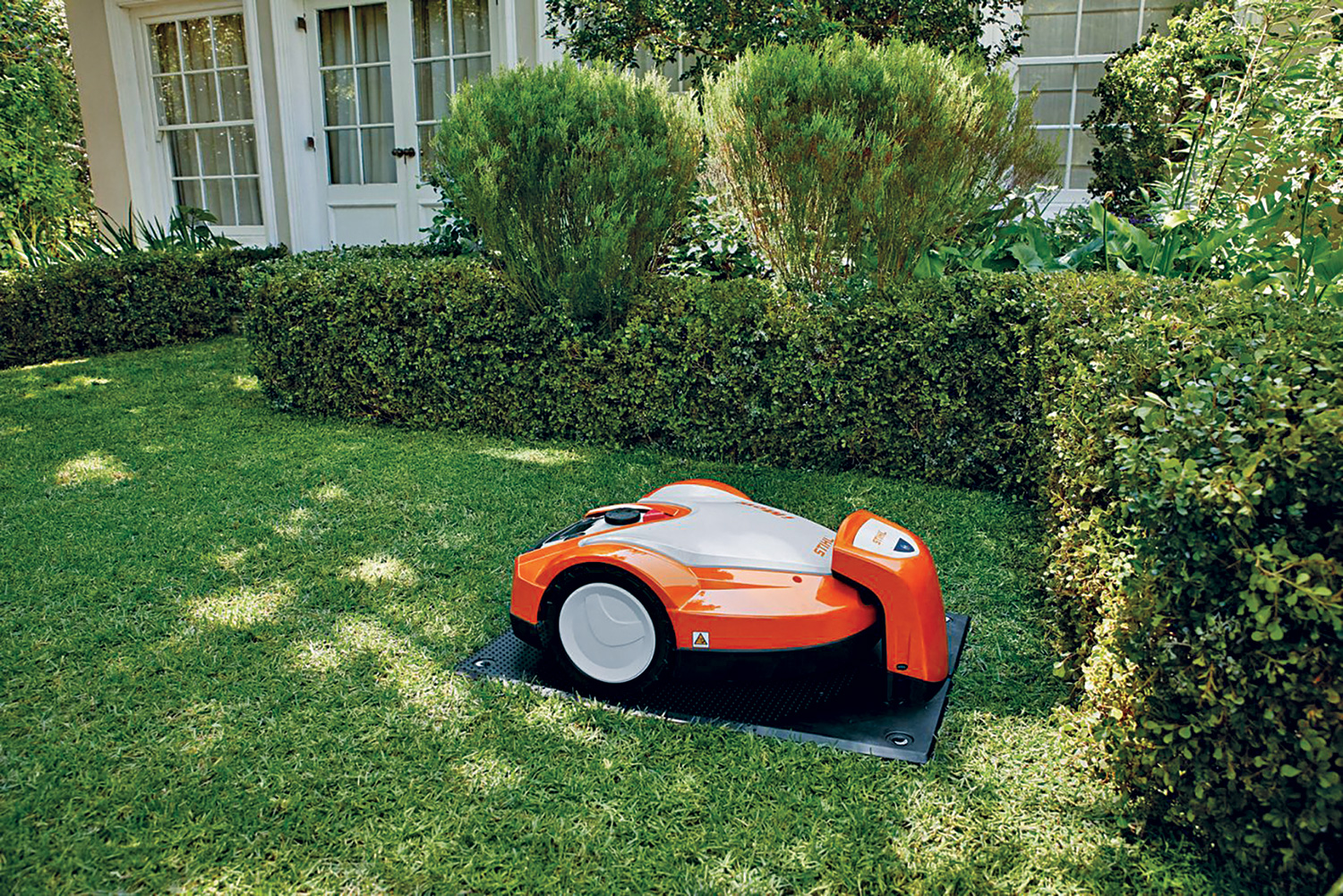Yes, it’s probably time to let AI take over your lawn.
by Scott Hunter
It’s the first Friday of spring and the in-laws are on their way. It’ll take them 45 minutes to get to your place, which is just enough time to mow the lawn. You pull the mower out of the shed for the first time this year. Will it start? You put in some fresh gas, check the oil and rip the cord with everything you’ve got. Nothing. Pulling out the air filter, you find remnants of a mouse’s home. Clean that. Pull the cord again. Nothing. Although you did aggravate that rotator cuff injury. You’re 15 minutes into “mowing your lawn” and haven’t cut a single blade of grass. Surely there’s a better way?
There is. Go the way of the Jetson’s—get yourself a robot. Just imagine a Roomba that cuts your grass.
Robot mowers aren’t a new idea. Husqvarna released a solar-powered model way back in 1995. Ambrogio got into it in 1999, and in the last few years a huge number of companies have released their own versions. Ryobi, WORX, Bosch, Robomow, Toro are all on the market.
At Walker’s Small Motors in Collingwood, half of the showroom is now dedicated to electric lawn and garden equipment including the new iMow from Stihl.
“They can do the job but they do need some human intervention and installation to get the finish that you are looking for,” says general manager Scott Walker. “The best thing is to further your understanding of the units to manage your expectations.”
Stayner’s AutoMow (automow.ca) sells the Italian Ambrogio range of robotic mowers and owner David Fisher has fully converted to them.
“I put my Ambrogio 4.0 at my mom’s place which is a half-acre,” he recalls. “It ran for three months straight without a problem.”
Imagine a hassle-free lawn mowing experience for three solid months. Glorious. Even when there was a problem, he got a “block error” on his phone. The app located the mower for him; he just had to pick it up and return it to its charging station.
But what if you love mowing the lawn? What if it’s your Thursday evening ritual?
“I absolutely, totally get that,” says Fisher. “I went to school for golf course management. I used to cut grass. I loved it. Best job ever. There’s nothing more satisfying; you can look back and see what you’ve accomplished, it’s instant gratification. But the first time we ran the Ambrogio Twenty Elite at my house, we watched it run the whole time while we were drinking beers on the back patio.”
“The first time we ran the Ambrogio Twenty Elite at my house, we watched it run the whole time while we were drinking beers on the back patio.”
David Fisher
Now that sounds like a satisfying lawn mowing experience. These units are commonly powered by a lithium-ion battery with a docking station somewhere on your property. They are often linked to a proprietary phone app, so you can program them to mow at a certain time, then return to the docking station to charge.
Fisher’s home model cuts about a quarter of an acre and costs $2,400. The unit itself is small; it’s 42 centimetres wide and weighs 7.2 kilograms. He programmed the unit to do his property as four different zones. He runs it in varying combinations of zones about every other day. And because he runs it so often, it’s less harsh on the grass itself, cutting as little as a quarter-inch every couple of days; the clippings create mulch for the soil, leading to a healthier lawn.
Other benefits include the amount of noise these units make.
“It sounds like a food processor,” says Fisher. “They’re quiet enough you can run them all night if you want. Plus you don’t have that orchestra of mowers on Thursday and Friday in your neighborhood. If everybody had one it would be great.”
As with most things these days, there is an endless array of options for robotic mowers. The metrics to look at include things like the size of your lawn, the grade of hill on your property (Ambrogio has one that will do a 70 percent grade!), voltage, amp hours and blade type. Many of the Ambrogio models use a perimeter wire to find their way around. That adds to installation cost, but they have other models that run on GPS. Toro’s version will be available this spring and uses cameras to learn your property and avoid soccer balls and kids’ toys. Others, like the Husqvarna Automower 415X, use a patented GPS system to navigate your property.
It’s an overwhelming learning curve once you start looking, but Fisher is happy to discuss the pros and cons of each system.
“Battery efficiency, motor efficiency, AI, GPS and build quality are where the differences lie between these products.”
Overall, Fisher is surprised these robotic mowers haven’t caught on more. He’s been in the business since 2017 and says in Europe they’re much more common. His only warning is to manage your expectations.
“Because you say robotic, people assume that it’ll do everything,” he jokes. “It doesn’t do everything. You still have to trim. It doesn’t clean the gutters, wash the windows and wax your car. But it does cut your lawn.”
And that’s way more than a mower that won’t start will do.
Growing Butternuts
The black walnut’s endangered relative deserves special attention.
We recently moved to Thornbury and have a good-sized yard. At the very back there is a young butternut tree growing. I understand they are an endangered species, so I will work with it! I also know their roots will emit a toxic chemical. What kind of wild native plants can I grow around it? It is pretty weedy back there right now, but I hope to plant meadow flowers and keep it as native as possible.
Alison, Thornbury
Hi Alison. Regarding your butternut. First off, for some great info on butternut trees and their endangered status, download the free Butternut Tree: A Landowner’s Resource Guide.
Once you’ve really studied your tree and confirmed you see no cankers, I suggest you do the following:
- Butternut trees require lots of sun, so hire an arborist if necessary to trim back any other trees that might be shading your butternut.
- Since your tree is still young, this is the best time to prune/shape the plant for longevity—use that arborist!
- Consistent water is absolutely necessary to avoid problems such as the deadly canker. Your tree will require about one inch (2.5 cm) of water every week during the growing season.
- A soil test will determine whether fertilizing is important for your tree. Generally a good quality, rich loamy soil will support your tree’s health.
- You’re right about butternut trees emitting toxic juglone into the soil from their roots. They are closely related to black walnut after all! This link will help.
- Native (and not so native) wild plants that are likely to thrive in the vicinity of a butternut tree include: Ajuga, Heuchera, Anemone, Uvularia (bellwort), Clematis, Leucanthemum, Hemerocallis, Narcissus, Hosta, Iris and ferns in general.
I hope this helps! Cheers, Charlie.



















